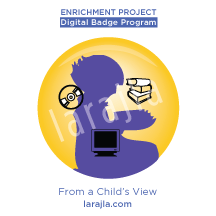When researching something new, adults are often told to “check out the kid’s section” in the library. By starting with kids’ materials, you can learn the terminology and basics in simple language and basic concepts. So, what other places can you find materials to help you start learning “from a child’s view?”
Steps
1. Check out your house.
Do you have books or kits kids would use to learn something new? Do you have anything you are interested in that you’d like to start exploring? Create a “resources” area in your home, on your computer, etc. Donate items you do not plan to use yourself to youth groups, after school programs, schools, etc.
2. Used good sales.
Check out garage, yard and rummage sales. Do you have a used book store? Does your library recycle books? If you see something you can repurpose for your interests, put it into your physical “resources.”
3. Online kid activity sites.
Online activity sites and teacher lesson sites are a great place to get simple instructions to do things. Try a few of these or find your own.
- www.surfnetkids.com/directory
- www.indianchild.com/interesting_hobbies.htm
- www.familyeducation.com/home
- www.allstaractivities.com
- www.educationworld.com
4. Youth group badges and patches.
Youth groups provide programs from just requirements to full booklets full of material. You can find many items online to start. You can find listings for some of these groups explaining what is available. Check out some of the following:
- www.girlscouts.org
- www.scouting.org
- frontiergirlsclubs.com
- www.4-h.org
- www.campfireusa.org
- www.spiralscouts.org
- www.keyclub.org/home.aspx
- www.scouts.ca
5. Volunteer with an organized group.
By volunteering, you may be able to get free or low-cost training. You’ll also expose yourself to “experts” from those who provide opportunities both within the group and outside that support the group.
6. Ask kids.
Go directly to the source. Find out what the kids know about your subject(s). If you’re looking for what’s new, ask the kids what they are learning. Find out where they go for fun! It might shock you to find out that they’re using computers in kindergarten or that at age 7, they are more tech-savvy than you are.
7. Local libraries.
Check out the kid section in your local library. Compare a subject from the kids section and the adult section to see the differences.
8. Keep a contact list.
As you meet experts who deal with children and teach them, keep a list of names and interests. When you begin to work on a subject, this person will be able to help you. If it’s something they are especially interested in, they’ll be happy to share more than just a few quick comments with you.
Supplements
SUPP_2013_American Heritage Girls.pdf
SUPP_2013_Boy Scouts_Merit.pdf
SUPP_2013_GirlScouts_Journey.pdf
SUPP_American Heritage Girls_2010.pdf
SUPP_Boy Scouts_Merit_2010.pdf
SUPP_Girl Scouts_11-17_2010.pdf
SUPP_Girl Scouts_Brownies_2010.pdf
SUPP_Girl Scouts_Juniors_2010.pdf
Sites to Explore

Leave a Reply